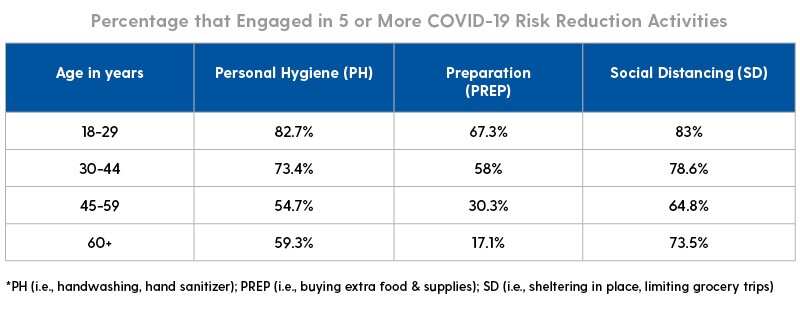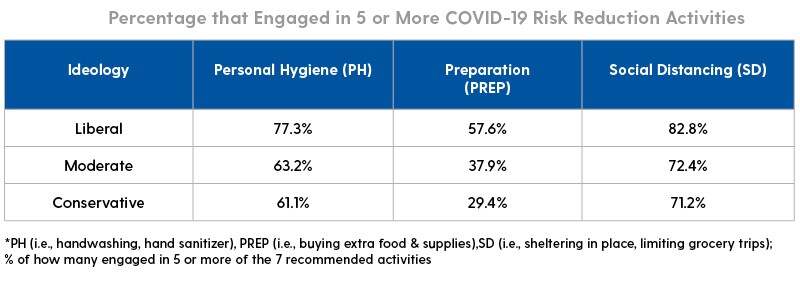Public Prevention Behaviors
UD survey indicates heavy news consumers more actively practicing COVID-19 prevention
UD survey indicates heavy news consumers more actively practicing COVID-19 prevention

Heavy consumers of news media are engaging in more recommended coronavirus (COVID-19) preventive practices than lighter consumers of news media, according to a new national survey conducted by University of Delaware communication researchers.
The survey showed that this is particularly true among young Americans and self-described liberals.
On average, 75% of adults reported engaging in the majority of recommended social distancing behaviors like keeping six feet away and limiting trips to stores. Slightly fewer (66%) reported habits like washing hands more frequently and avoiding face touching (hygiene), and 41% engaged in preparation behaviors like stocking up on food and medicine.
However, heavy viewers of news, regardless of the source, reported performing the most behaviors across all three types of risk reduction activities.
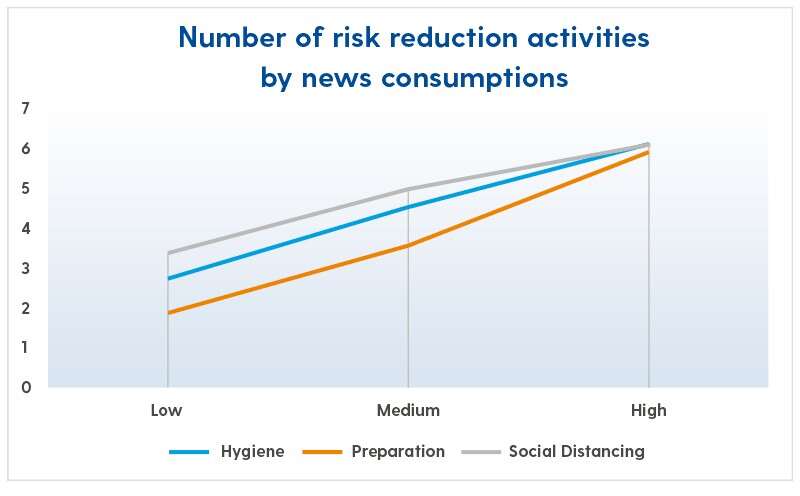
In the survey, it didn’t matter what particular news source people are choosing. Consuming more news meant following the Centers for Disease Control and Prevention (CDC) recommended behaviors more closely.
“The bottom line is that information matters. The more news people consumed, the more behaviors they were engaging in,” said Amy Bleakley, professor of communication and one of the lead investigators of the project. “There is often a lot of emphasis on specific content when we study media, and where you get your news can usually result in different outcomes, but in the case of COVID-19, we are finding that it’s news exposure in general that really matters. This is a win for public health – the message about what to do is cutting through all the noise and getting out there.”
There were also differences in people’s performance of CDC-recommended behaviors by age and political ideology, but all participants reported engaging in reasonably high levels of risk reduction activities. This is likely attributable to how people rely on media in the content of crises like COVID-19.
“In times of crisis, when we have a lot of media dependency, the differences between people are much less important both in terms of media sources and individual differences,” said Jennifer Lambe, associate professor of communication and a co-investigator on the study. “Effects are more uniform, particularly as the crisis is more life threatening.”
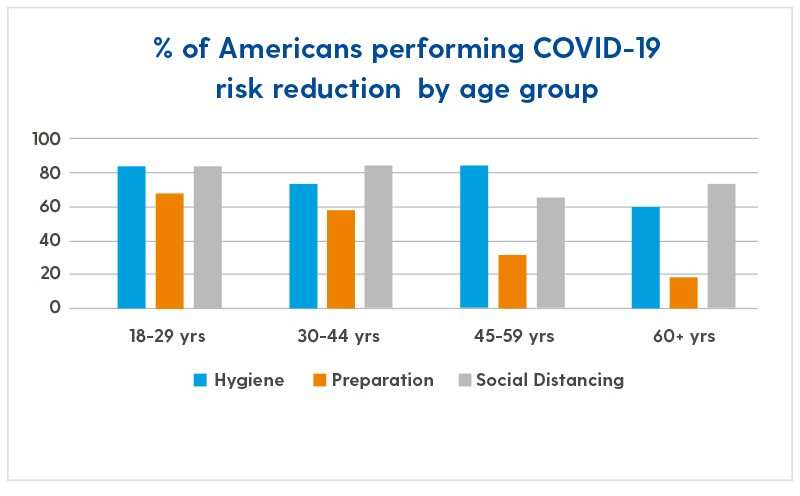
Although college-aged students have been shown gathering on beaches for spring break in recent weeks, this research shows that younger adults are actually leading the nation on risk reduction activities. Almost 83% of 18 to 29-year-olds report engaging in five or more recommended hygiene practices, which is 24% higher than adults 60 and older in the study. The data also show that older adults reported doing fewer risk reduction behaviors compared to those under 30, especially when it came to making preparations.
This is especially concerning given reports that older adults are at higher risk for death and other serious complications from COVID-19.
Survey respondents were asked to report their political ideology on a seven point scale from very liberal to very conservative. Those who reported being very to somewhat liberal indicated that they were engaging in personal hygiene, preparation and social distancing behaviors at a higher rate than what was reported by self-described moderates or conservatives.
However, the survey results showing that liberals are more likely than conservatives to be engaged in all of these preventive behaviors is noteworthy.
“Given that research from political psychology indicates that conservatives are, on average, more concerned about pathogens and threats in their environments than liberals are, the fact that conservatives are significantly less likely than liberals to be engaging in these preventative behaviors is surprising,” said Danna Young, a political and media psychologist in the Department of Communication. “This discrepancy may have resulted from the cues coming from conservative elected officials and media personalities who, throughout the first half of March, signaled that COVID was being overblown by both media and Democrats.”
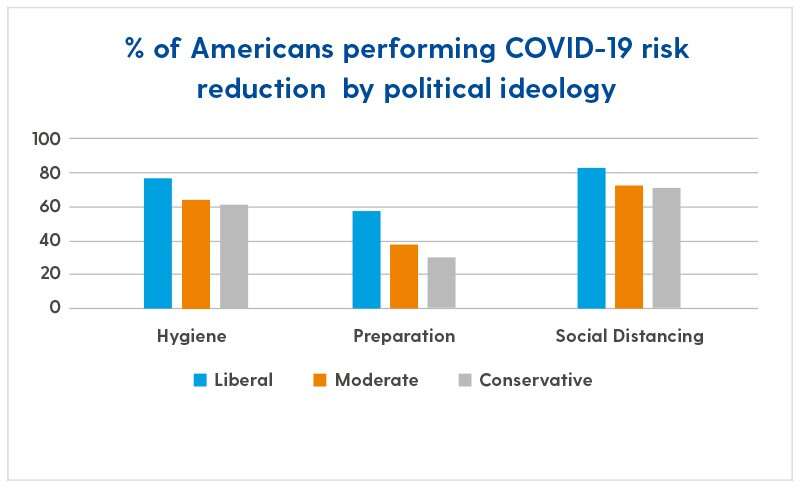
Methodology: 1,000 U.S. participants (out of 1,587 invited panelists) responded to a questionnaire online from March 20-25, 2020. Margin of error for these results is +/-3.16. Data was collected through Social Science Research Solutions (SSRS) by Dynata, a research firm specializing in global online research panels. This survey was funded by the University of Delaware’s Research Office, College of Arts and Sciences, and its nonpartisan Center for Political Communication (CPC). This study was supervised by Amy Bleakley, professor in the Department of Communication.
